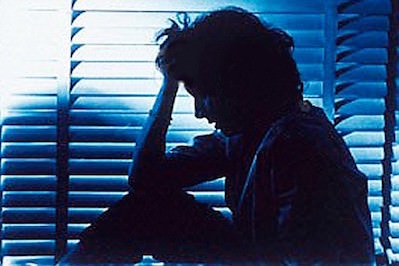Mental Disorders Induced by Neoliberalism Are Crushing the Bodies and Minds of Millions
Societies around the world are suffering epidemics of mental illness because “human beings, the ultrasocial mammals, whose brains are wired to respond to other people, are being peeled apart.”
Societies worldwide are suffering epidemics of mental illness because “human beings, the ultrasocial mammals, whose brains are wired to respond to other people, are being peeled apart,” writes George Monbiot at The Guardian.
“Though our wellbeing is inextricably linked to the lives of others, everywhere we are told that we will prosper through competitive self-interest and extreme individualism.” The consequence? “[P]lagues of anxiety, stress, depression, social phobia, eating disorders, self-harm and loneliness.”
In Britain, men who have spent their entire lives in quadrangles – at school, at college, at the bar, in parliament – instruct us to stand on our own two feet. The education system becomes more brutally competitive by the year. Employment is a fight to the near-death with a multitude of other desperate people chasing ever fewer jobs. The modern overseers of the poor ascribe individual blame to economic circumstance. Endless competitions on television feed impossible aspirations as real opportunities contract.
Consumerism fills the social void. But far from curing the disease of isolation, it intensifies social comparison to the point at which, having consumed all else, we start to prey upon ourselves. Social media brings us together and drives us apart, allowing us precisely to quantify our social standing, and to see that other people have more friends and followers than we do.
As Rhiannon Lucy Cosslett has brilliantly documented, girls and young women routinely alter the photos they post to make themselves look smoother and slimmer. Some phones, using their “beauty” settings, do it for you without asking; now you can become your own thinspiration. Welcome to the post-Hobbesian dystopia: a war of everyone against themselves.
Is it any wonder, in these lonely inner worlds, in which touching has been replaced by retouching, that young women are drowning in mental distress? A recent survey in England suggests that one in four women between 16 and 24 have harmed themselves, and one in eight now suffer from post-traumatic stress disorder. Anxiety, depression, phobias or obsessive compulsive disorder affect 26% of women in this age group. This is what a public health crisis looks like.
If social rupture is not treated as seriously as broken limbs, it is because we cannot see it. But neuroscientists can. A series of fascinating papers suggest that social pain and physical pain are processed by the same neural circuits. This might explain why, in many languages, it is hard to describe the impact of breaking social bonds without the words we use to denote physical pain and injury. In both humans and other social mammals, social contact reduces physical pain. This is why we hug our children when they hurt themselves: affection is a powerful analgesic. Opioids relieve both physical agony and the distress of separation. Perhaps this explains the link between social isolation and drug addiction.
.
—Posted by Alexander Reed Kelly
With an uncertain future and a new administration casting doubt on press freedoms, the danger is clear: The truth is at risk.
Now is the time to give. Your tax-deductible support allows us to dig deeper, delivering fearless investigative reporting and analysis that exposes what’s really happening — without compromise.
Stand with our courageous journalists. Donate today to protect a free press, uphold democracy and unearth untold stories.









You need to be a supporter to comment.
There are currently no responses to this article.
Be the first to respond.